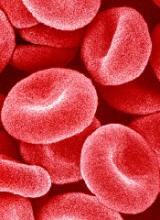The European Commission (EC) has extended the approved indication of ferric maltol (Feraccru) to include treatment of all adults with iron deficiency, with or without anemia.
The drug was previously only approved in Europe for the treatment of iron deficiency anemia in adults with inflammatory bowel disease.
The EC’s extended approval governs the marketing of ferric maltol in all 28 European Union member countries, as well as Iceland, Norway, and Liechtenstein.
“We are extremely pleased [the EC] has so rapidly ratified the expansion of the indication for Feraccru,” said Carl Sterritt, chief executive officer of Shield Therapeutics, the company developing the product.
“This decision confirms a significantly broader patient population target opportunity for Feraccru in Europe, where 40 million* people are estimated to be iron deficient.”
Ferric maltol is a stable, non-salt, oral formulation of ferric iron, which has a different mechanism of action than salt-based oral iron therapies.
When salt-based oral iron therapies are ingested, the iron must dissociate from the salt in the gastrointestinal tract to allow the iron to be absorbed and treat the iron deficiency or anemia. This free iron readily chelates to form insoluble clumps as well as producing free radicals that, together, can cause a range of mild-to-severe gastrointestinal adverse events, including nausea, bloating, and constipation.
Conversely, iron can be absorbed from the ferric maltol molecule. As a result, the treatment is less likely to cause gastrointestinal issues. Ferric maltol has been shown in clinical trials (AEGIS 1 and 2) to be well-tolerated by patients who previously failed treatment with salt-based oral iron therapies.
Prior to the extended approval of ferric maltol, the only treatment option for patients with iron deficiency, with or without anemia, who could not tolerate salt-based oral iron therapies, was intravenous iron therapy.
Intravenous iron quickly increases iron stores via direct administration of very large doses of iron, causing an increase in hemoglobin levels that is physiologically controlled and occurs over a period of weeks, as is the case with ferric maltol. However, intravenous iron therapies can be complex to administer and may produce spontaneous hypersensitivity reactions.
*Levi, M et al. Epidemiology of iron deficiency anaemia in four European countries: a population-based study in primary care. 2016, Eur J Haematol, 97: 583–593. doi:10.1111/ejh.12776


